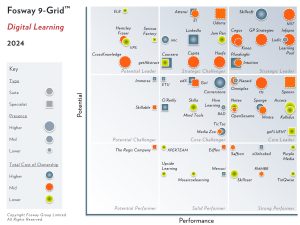One year ago…
Organisations opened their doors to the Government’s much-anticipated Restart employability support scheme and the first referrals entered. However even before the scheme began, the changing state of the economy and unpredictable labour market rendered it, if not redundant, then its impact significantly diminished.
With much written and debated about the scheme itself, including its purpose, scale and services, surprisingly little has been discussed about those doing the actual delivery, the IAG advisors.
What has been their experience and what are the challenges they face?
Right scheme, wrong time?
The Department for Work & Pension’s (DWP) Restart scheme is targeted at helping the long-term unemployed back into work. Whilst it was not designed specifically in response to the Covid pandemic it was undoubtedly heavily influenced by it. At the time it was being formulated in 2020, the UK had been through one lockdown and entering a second, with talks of a third. Whilst the furlough programme had saved many jobs, mass unemployment was predicted when that unwound during 2021 and so given that context, the DWP predicted around 1.4m referrals to the Restart scheme and a spend of £2.9bn. It made sense at the time and, credit where credit is due, it was a valiant attempt to anticipate issues and get ahead of the curve.
But of course, like many best laid plans, it did not work out like that and that mass unemployment never materialised. Instead, now in July 2022 we have more job vacancies than we do unemployed. And yet, at the same time we have lower numbers in paid work than we did pre-pandemic. This is largely because over 1m people have left the labour market altogether since 2019. Of those, the largest grouping is individuals aged 50-64, accounting for c. 30% of the 1m and bringing the total number of economically inactive in this group to 3.5m.
The Learning & Work Institute’s Participation Gap report covers these issues in detail, but one consequence has been the down-playing of the Restart scheme. Numbers are expected to be 40% less than predicted with a potential underspend of up to £1.1bn, but the Government is having to play catch-up on the 50+ group, in particular.
At a macro level, the impact, or lack thereof, has significant consequences, but for now I’d like to look at the micro-level. And most importantly: what is the experience for the most critical cohort in all this, the IAG advisors delivering the programme?
‘At the coalface’
Saffron continues to refine and re-purpose our Create Your Own Future platform, which is centred around AI technology that supports both end-user and IAG advisor alike. Given this work, we have worked closely with many IAG advisors over the past 2-3 years and latterly Restart has been a big focus during that period. Whilst specific details remain confidential, these partnerships have provided great insight into the experience of the IAG advisor ‘at the coalface’.
Right people, right place
Our first insight was that the vast majority of IAG advisors are doing the job for the right reasons: they have a visceral commitment to wanting to help the individuals they support. That may not be much of a revelation to readers who know this cohort well – you know this is a dedicated bunch of people. But we had some trepidation in that, whilst our Create Your Own Future platform is designed to complement and support the advisor as much as the supported individual, we anticipated some resistance: ‘it’ll never work… a virtual advisor could never do what I do’ or the like.
But far from it, advisors were quick to adapt. Grasping that the system took away a lot of the repetitive ‘legwork’, freeing them to spend more targeted, higher value time with those who need it. As one advisor put it:
“I just want to be able to get on with actually doing my job – helping and advising my clients. Anything that can help me do it… I am all for it!”
The good, the bad and the ugly
Ultimately, that sentiment bodes well for the adoption of digital solutions, which the DWP had specifically called out and encouraged in the original Restart specification. But from what we have seen, how that has been interpreted and implemented varies greatly from one Prime contractor to another.
The Prime contractor, who ‘owns’ the direct contract with DWP, largely dictates the digital systems that have to be used. The advisor, whether employed directly by the Prime or, as is more often the case, a sub-contractor – or sub-prime – has little to no choice in the matter.
At the better end of the scale in one example, the central case management system used is relatively light in terms of data-entry requirements and the advisor is also provided with a suite of tools to assist them in their work. But it still requires the advisor to guide their client through the process and, as only a couple of the tools are appropriate for the client to use themselves, there is still a significant amount of data-entry. However, it is obvious that there is some ‘joined up thinking’ behind the technologies that seek to ease the burden on the advisor.
At the other end of the spectrum, advisors are confronted with an extensive, often incoherent questionnaire that they are charged with completing with the client in the first interview. As many candidly admit, it is not possible to do it all thoroughly in the allocated hour and they are shamed with inclusion on a ‘naughty list’ the next day if they fail to do so.
But beyond that point, the advisor is pretty much left to do the rest alone – assessments, CV-writing, job searches, chasing and checking on clients etc. – using whatever resources they can find. They then have to input progress data for reporting purposes.
Putting aside issues of consistency, the administrative burden alone was estimated to take up to 70% of the advisors’ time which was behind much of the frustration we have heard expressed.
‘Take care of the pennies…
…and let the pounds take care of themselves’, as the saying goes. The same is true for IAG advisors: support and take care of them and any programme can be successful. Fail to do so and we risk the opposite. And IAG advisors have options in the present climate.
The role of IAG advisor is not immune to the vagaries of the current jobs market: recruiting and retaining quality people is just as difficult as it is for many other roles currently. Add to that the fact that we are likely to ask many to pivot from Restart as it is scaled back, to other probable initiatives, such as with over 50s, and the importance of taking care of these precious pennies is obvious.
We are acutely aware that our ‘on the ground’ insight offers just a snapshot into the scale and variety of employment support across the nation so we would welcome your comments and thoughts.









